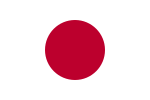From Wikipedia, the free encyclopedia
| This article needs additional citations for verification. (January 2011)(Learn how and when to remove this template message) |
 | |
| General details | |
|---|---|
| Primary languages | Japanese |
| Literacy | |
| Total | 99.0% [d] |
| Male | 99.9% |
| Female | 99.7% |
In Japan, education is compulsory at the elementary and lower secondary levels.[1] Most students attend public schools through the lower secondary level, but private education is popular at the upper secondary and university levels. Japan's education system played a central part in Japan's recovery and rapid economic growth in the decades following the end of World War II.
After World War II, the Fundamental Law of Education and the School Education Law were enacted. The latter law defined the school system that is still in effect today: six years of elementary school, three years of junior high school, three years of high school, two or four years of university.
Education prior to elementary school is provided at kindergartens and day-care centers. Public and private day-care centers take children from under age one on up to five years old. The programmes for those children aged 3–5 resemble those at kindergartens. The educational approach at kindergartens varies greatly from unstructured environments that emphasize play to highly structured environments that are focused on having the child pass the entrance exam at a private elementary school.
The academic year starts from April and ends in March, having summer vacation in August and winter vacation in the end of December to the beginning of January. Also, there are few days of holidays between academic years. The period of academic year is same all through elementary level to higher educations nationwide.




ليست هناك تعليقات:
إرسال تعليق